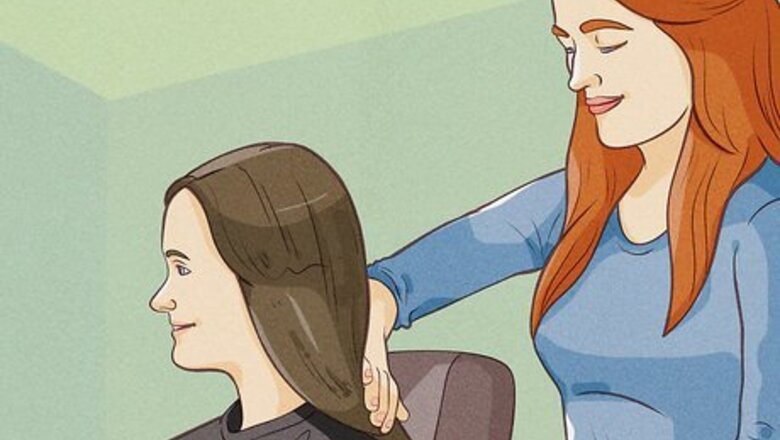
views
X
Trustworthy Source
American Academy of Dermatology
Professional organization made of over 20,000 certified dermatologists
Go to source
increased shedding, or breakage. If your hair has stopped growing, it won't start again until you identify and address the underlying cause of hair loss. Issues that can cause hair loss at a young age include stress, poor hair care, or medical conditions.
Determining the Cause of Your Hair Loss
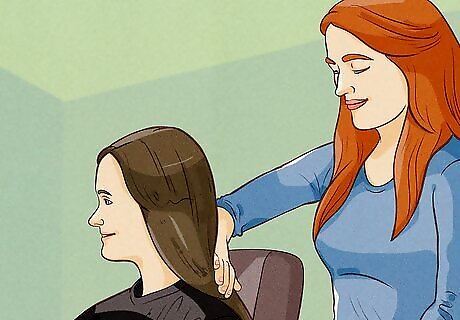
Talk to your hair stylist about treatments and styling. Some chemical processes might cause hair to break off or fall off temporarily. These include bleaching and coloring, straightening, and perms. Heat from straightening irons or blow-drying can also cause hair loss. Hairstyles that pull your hair tightly can cause "traction alopecia," in which follicles are damaged over time. If you feel scalp pain, avoid pulling your hair back into tight ponytails or other styles that pull the hair.
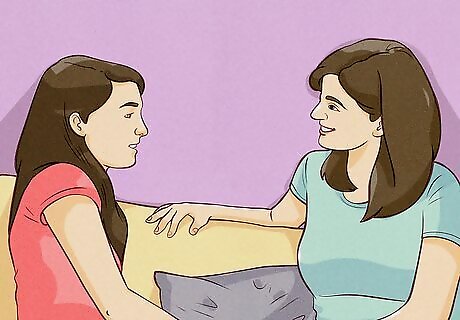
Take family history into consideration. Ask your parents whether there's a history of hair loss in your family. The most common cause of hair loss in adults — male or female pattern baldness — is genetic. However, a combination of genetics and hormones can start this sort of hair loss in your mid-teen years. Recent studies show that genetic hair loss can be inherited from either parent in both boys and girls.
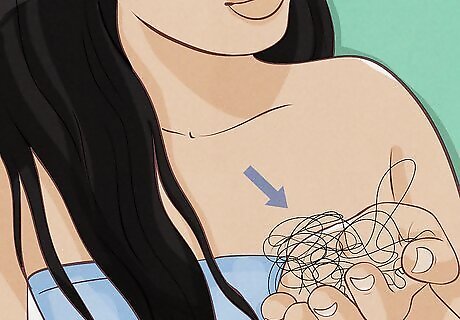
Keep track of excessive shedding. Some amount of shedding — about 50 to 100 hairs per day — is completely normal. However, stress or traumatic events (accidents, surgery, illness) can cause excessive shedding. Normally, excessive shedding goes back to normal within six to nine months, but constant stress can cause it to progress to permanent hair loss.
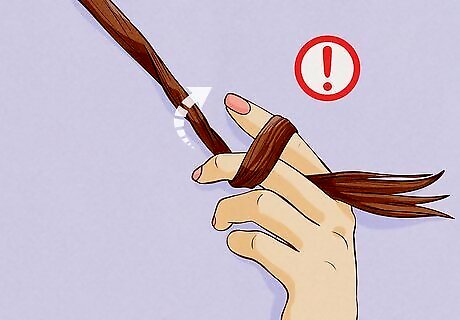
Be cautious about pulling out your hair. Teenagers often play with their hair absent-mindedly, twirling or tugging on it. In some cases, this may be a symptom of a disorder called "trichotillomania," in which people pull out their hair when nervous or distracted. Though the behavior is usually unconscious, it leaves sufferers with bald patches. The disorder is often caused by stress. See a therapist or a hair and scalp specialist called a "trichologist" for proper diagnosis and treatment.
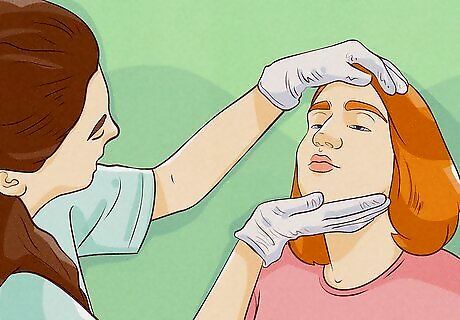
See your family doctor or dermatologist about medical conditions. There are many illnesses and conditions that could cause hair loss. Hormonal conditions like uncontrolled diabetes, thyroid disease, or polycystic ovary syndrome can interfere with hair production. Those with lupus can also experience hair loss. Eating disorders like anorexia or bulimia can starve the body of essential proteins, vitamins, and minerals needed for hair growth. Some vegetarian teens also lose hair if they don’t get enough protein from non-meat sources. Athletes are at a higher risk for hair loss because they’re more likely to develop iron-deficiency anemia. Anemia can then result in hair loss. One cause of patchy hair loss, often with scaling and broken hairs, is ringworm of the scalp, called tinea capitis. It is not very common in teens, but it can occur. This is caused by a fungal infection and is treated with oral medications and special shampoos.
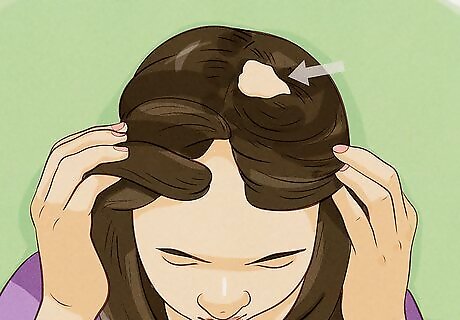
Check for small, round bald patches. One or more of these patches on your scalp may point to a skin disease called "alopecia areata" that causes hair loss. It's an autoimmune disorder in which your own immune system damages hair follicles. Luckily, it can be treated, and hair usually regrows within a year. Still, some sufferers lose their hair repeatedly or even permanently. If unchecked, alopecia areata can sometimes progress to full baldness or even complete loss of all body hair, though this is rare. See a dermatologist for a proper diagnosis, which may involve simple examination of hair under a microscope or may call for a skin biopsy. The condition is not contagious.
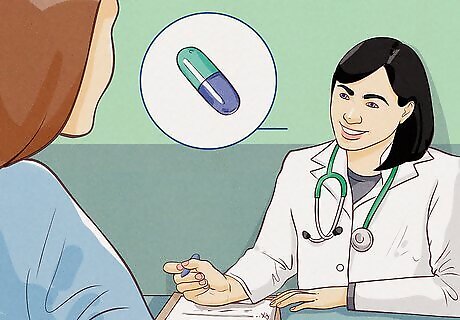
Speak with your doctor about medications. Chemotherapy for cancer is a medical treatment particularly well-known for causing hair loss. However, many prescription drugs — including some used to treat acne, bipolar disorder, and ADHD — list hair loss as a side effect. Diet pills that contain amphetamines can also cause hair loss. Show your doctor a detailed list of all current medications, both prescription and over-the-counter, to see if they might be causing your problem.
Adjusting Your Hair Care
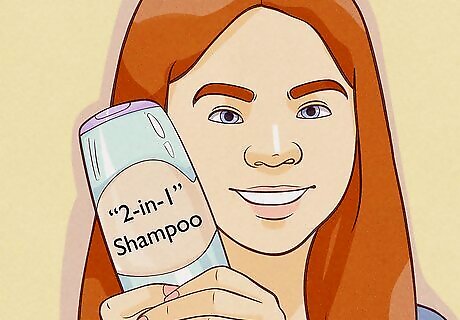
Use hair products formulated for your hair type. It can be overwhelming to confront the crowded shelves in the hair-care aisle at the store. But taking the time to read the labels and find shampoos and conditioners designed for your specific needs can pay off. For example, if you color your hair, use products designed for color-treated hair. If your hair is chemically treated or suffering from damage, consider a “2-in-1” shampoo. Some hair care professionals recommend using baby shampoo that's milder on hair. Regardless of cost, many shampoo and conditioner brands provide the same benefits. Don’t feel like you have to splurge to get a good product made for your hair type. Be wary of products advertising hair loss prevention or hair regrowth, as there's not scientific evidence backing them up. Ask your hair stylist or dermatologist for advice on which hair products may be best for you.
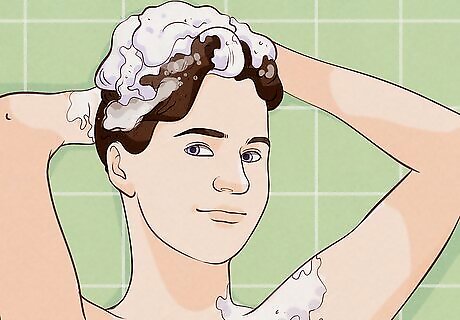
Maintain a regular washing routine. Wash your hair with a gentle shampoo and conditioner once a day or every other day, especially if you have oily hair. You may think that washing your hair every day might actually speed up hair loss, but that's not the case. Hair follicles can't function properly when they're blocked with dirt or oil. Regular washing will improve follicle health and halt excessive shedding that might lead to hair loss. Focus on cleaning the scalp with shampoo rather than the strands of hair. Washing only your hair might make it dry it out, making it prone to breakage and shedding. Apply conditioner after every shampoo to rehydrate hair and improve hair strength. Unlike shampoo, you should avoid the scalp and concentrate on the tips of the hair. Conditioning the scalp can lead to blocked, unhealthy follicles. Avoid rubbing your hair too hard with a towel after a shower — it can break and damage hair.
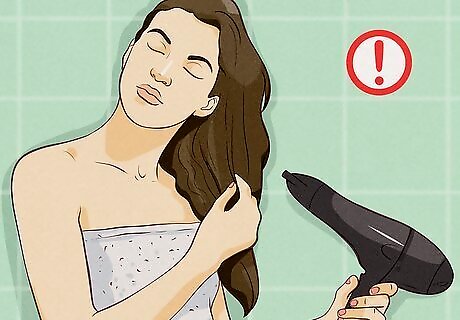
Protect your hair from heat. The heat from blow-dryers, curling irons, and straightening irons can damage hair, making it break and shed. Avoid all processes that might cause heat damage: let your hair air dry, and try out hairstyles that suit your natural hair texture. You may have to style your hair with heat for special occasions. If you must heat-style, protect your hair with heat-protecting hair products.
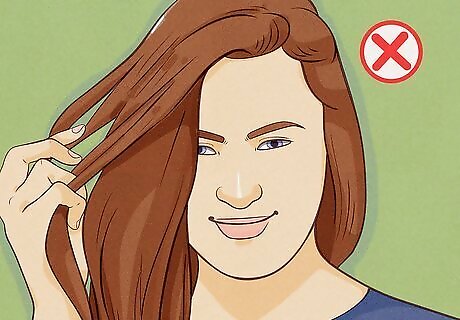
Avoid pulling on your hair. Traction alopecia is caused by consistent pulling on hair strands over a period of time. Avoid tight braids, pony tails, or other styles that put undue stress on your hair. When combing, curling, or straightening your hair, take care to prevent tugging. Use a thin comb to lightly pull apart any tangles. Also avoid teasing or backcombing your hair.
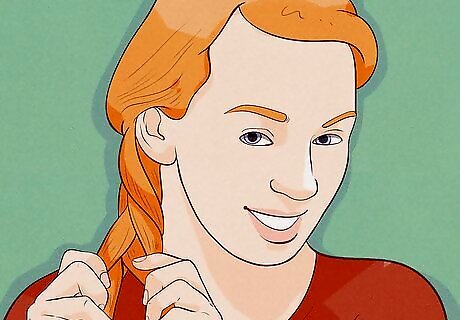
Style your hair when it’s dry. Wet hair is more prone to stretching and breaking when it's pulled on. If you're going to braid it or twist your hair in any way, wait until it’s dry.
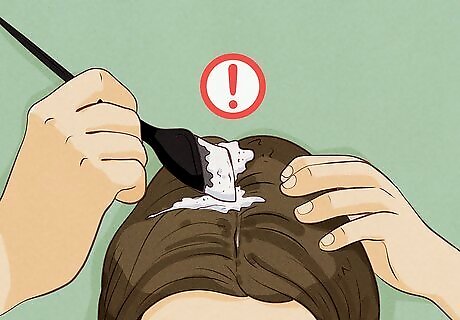
Reduce your chemical exposure. Be careful if you regularly dye or otherwise treat your hair with chemicals. Chemical processes like straightening or perming can damage and weaken hair follicles, leading to breakage and hair loss. Prolonged exposure to the chemicals in pools can have a similar effect. Whenever possible, avoid chemical treatments for your hair. Wear a swim cap when in the pool to protect your hair. Use hair products formulated for swimmers to replace lost moisture on your scalp and hair if you're a regular swimmer.
Making Lifestyle Changes
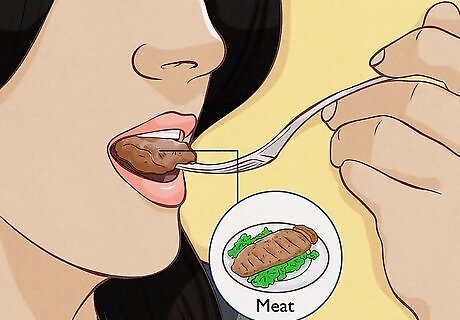
Maintain a balanced, healthy diet. The right diet will provide you with the vitamins and minerals needed for healthy hair. Unbalanced diets (sometimes seen in vegetarians or people with eating disorders) often result in hair loss. To prevent this, work the following into your diet: Iron and zinc: These minerals, found in lean red meat, soybeans, and lentils, help your hair follicles to grow. Protein: Meat, fish, beans, nuts, and yogurt promote cell growth and healing in your hair. Omega-3 fatty acids: Fatty fish like salmon improve hair’s strength and shine. Additional benefits include depression relief and improved heart health. Biotin: This B vitamin, found in eggs, is important for healthy growth of all cells, including hair. Simplified complex causes. "The straightforward information here breaking down the reasons behind teen hair loss made this complicated topic so much easier to grasp. Now my son and I get what triggers it genetically and lifestyle-wise." - Zuahna A. Research causes with no family history. "With my teen starting to lose hair, even though we don't have a genetic predisposition, I appreciated learning how other factors like nutrition, meds, and stress can also play a part. It's helping me research what's going on with him." - Jenny L. Provided actionable diet advice. "I've heard certain vitamins can help grow hair, but didn't know which foods actually have them. Spelling out vitamin-rich options like fatty fish, eggs and beans gave me concrete ways I can eat to nourish healthy hair." - James L. Informed me about surprising hair loss causes. "Like many busy people, I've been neglecting self-care. Finding out how diet, exercise, stress relief, etc., influence hair growth pushed me to take better care of myself all around." - Manisha A. ADHD meds were to blame. "I never associated my ADHD meds with my current hair shedding. Realizing medications can cause loss explained what was happening and told me to ask my doctor about alternatives or supplements to offset the effects." - Mary K. Did you know that wikiHow has collected over 365,000 reader stories since it started in 2005? We’d love to hear from you! Share your story here.
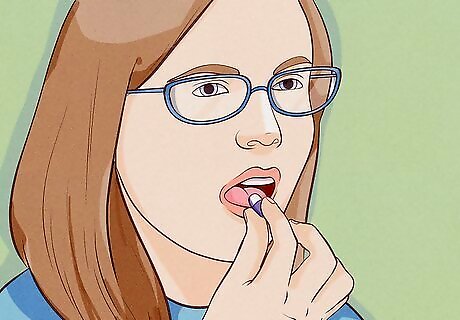
Round out your diet with vitamin supplements. Some vitamins, like vitamin D, help with hair growth but are tricky to get through eating. Vitamin D supplements (about 1,000 IU a day) can help improve your hair. Take B vitamins such as biotin, vitamin E, zinc, and magnesium supplements once a day to ensure you are consuming these vital vitamins and minerals. Though there is no direct correlation between vitamin supplements and the prevention of hair loss, supplements will help maintain your current hair and body health.
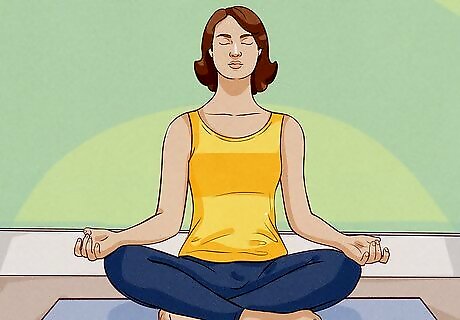
Address any stress triggers in your life. Hair loss can be connected to prolonged stress or highly traumatic events like accidents or surgeries. In such cases of "telogen effluvium," you may lose 1/2 to 3/4 of your hair and see it come out in handfuls when you wash, comb, or run your hands through your hair. It's usually temporary and should return to normal in six to 9 months, but it can become chronic if you don't address your stress. Once stress has been managed, hair growth usually returns. Take up a stress-releasing activity like yoga, meditation, or running. Make room for things you enjoy in your daily routine, and focus on bringing calm and peace into your life. If the stress feels unmanageable, talk to a therapist or counselor to help you release tension and recover from stress.
Seeking Medical Treatment
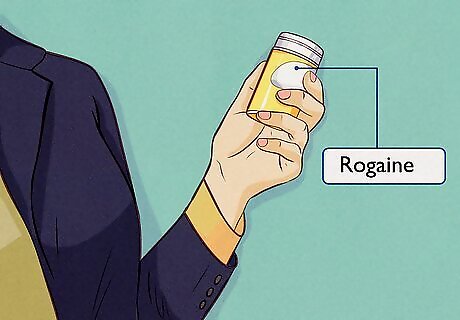
Take over-the-counter hair loss medication. Over-the-counter medications like Rogaine work well with consistent use, but aim to stop hair loss, not regrow hair. However, regrowth can occur in some cases. You may see new hair growth that's shorter and thinner than your normal hair, but it will slow down if you stop taking the medication. Do not take Rogaine if you are or plan on becoming pregnant.
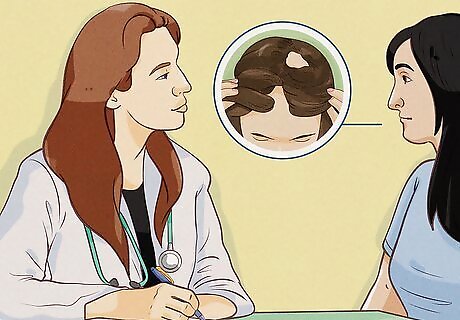
Speak to a dermatologist if you display extreme symptoms. Rapid hair loss at a young age should be addressed immediately by a medical professional. Hair loss in an unusual pattern, like many patches or loss in just one area, can also be a sign of a serious problem. Pain, itching, redness, scaliness, or noticeable abnormality should all be reported, as should hair loss when accompanied by weight gain, muscle weakness, or getting cold or tired easily. The dermatologist will review your medical history and do an exam of your hair and scalp to diagnose the cause of your hair loss. She may also run other tests like a blood test to rule out disease; microscopic examination of a plucked hair; or a skin biopsy.
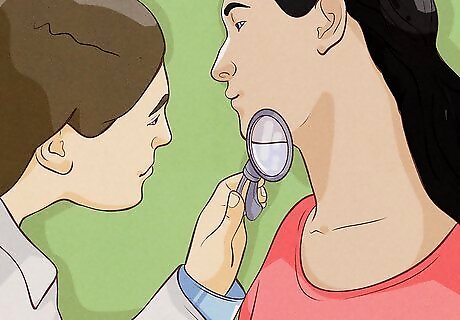
Provide the dermatologist with accurate information. During the examination, your dermatologist will ask a series of questions. Be prepared to provide the following information: Are you losing hair only from your scalp or from other parts of your body as well? Do you notice a pattern to the hair loss, like a receding hairline or thinning on the crown, or is the hair loss throughout your head? Do you dye your hair? Do you blow dry your hair? If so, how often? What kind of shampoo do you use on your hair? What other hair products, like gels or sprays, do you put on your hair? Have you had a recent illness or high fever? Have you been under unusual stress lately? Do you have any nervous habits like hair pulling or scalp rubbing? Do you take any medications, including over-the-counter drugs?
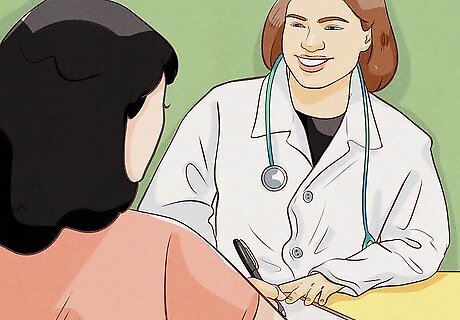
Ask for prescription medication to treat pattern baldness. A dermatologist will be able to prescribe finasteride (brand name Propecia). It comes in pill form and should be taken daily. However, the purpose of this drug is to stop hair loss, not regrow hair. Propecia is usually prescribed to men, as it can pose risks of birth defects if used in women who become pregnant.
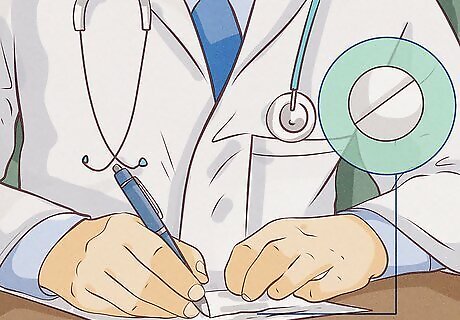
Speak to your doctor about changing medication if necessary. If your hair loss is a side effect of a medication you're taking for another condition — like acne or ADHD — your doctor may be able to change your treatment options. Never simply stop taking your medication, as this could cause your underlying condition to worsen. If you suffer from a condition like diabetes or thyroid disease, taking proper care of your disorder should reduce or prevent your hair loss.
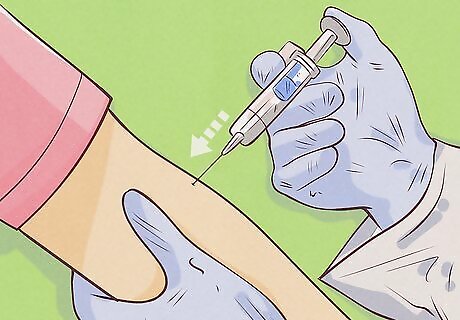
Look into corticosteroid to treat alopecia areata. If your dermatologist diagnoses you with this autoimmune condition, talk to her about corticosteroids. These powerful anti-inflammatory drugs suppress your immune system and treat alopecia areata. Your dermatologist may administer corticosteroids in three ways: Local injections: injections of the steroids directly into the hairless patches. Side effects may include temporary pain and temporary depressions in your skin that usually refill on their own. In pill form: Side effects of oral corticosteroids include hypertension, weight gain, and osteoporosis. Because of this, pills are rarely prescribed for alopecia, and only for short periods of time. Topical ointment: Ointments or creams containing steroids can be rubbed directly on the hairless area. These are less traumatic than injections and are often prescribed for children and teens. However, steroid ointments and creams are less effective than injections. Your dermatologist may also prescribe other topical medications to apply to the affected area of your scalp.



















Comments
0 comment